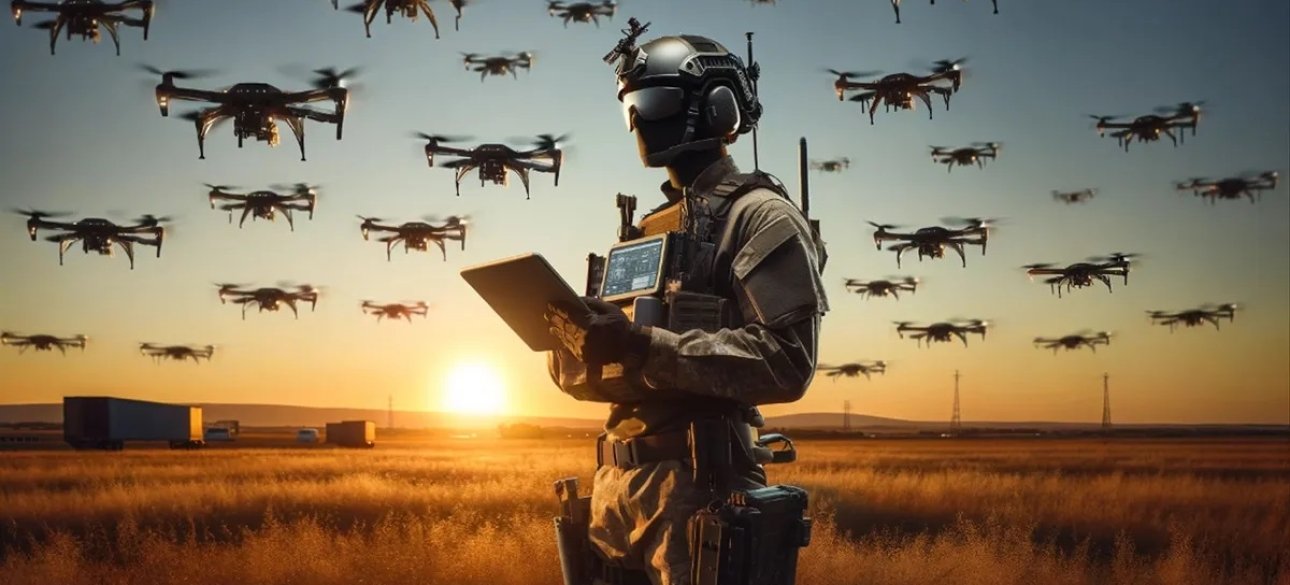
 By Eliza Popova
By Eliza Popova
The advancement of forward is measured by meters, and the recruited villages become insignificant and are quickly forgotten. Although the war in Ukraine remains an example of the war of the industrial era of the 20th century, a deep shift occurs against the background of this massacre. In the modern world, the battlefield has become transparent, the warheads have become more accurate, and weapons are very cheap.
On the front line, this does not have a significant effect, please note - there is still an important mass. As always, artillery, missiles and machine guns predominate. The murder, injury or disruption of the soldiers remains the "butt of the butcher", and, as before, there is nothing better than the hourly artillery shelling and the melee that can undermine the enemy's will to fight. It is a battlefield that can be seen with your own eyes.
But the next hill from these front lines are the critical things needed to support and supply. They are the most important supply chains and the rear of the battlefield with its artillery positions, team points and logistics-it was always difficult to find, it is difficult to attack and expensively destroy-so far. In the previous wars, it was almost impossible to "look for the next hill".
To identify the rear forming with any degree of accuracy of guidance, you would have to use rough tools, such as radar or scanning of photos of many hours of antiquity that could show only small sections of the battlefield, as if you were looking through a straw from under carbonated water. Combined with the "score of intelligence from all sources", the enemy location data and its targeting were rude, ephemeral and often inaccurate.
However, today the spread of drones and other combat technologies gives the commanders an almost transparent idea of the entire battlefield. The information is constant, complete, goes in real time and accurate GPS. Such transparency of the battlefield is invaluable for artillery and aviation in the attraction of goals.
Until recently, the term "inaccuracy" has been the right description of the fact that often thousands of shots are necessary to ensure some confidence that the goal can be destroyed. And given the whims of the weather, wind and many other factors, even with the visual tracking of real -time goals and modern computers that calculate accurate ballistics, hundreds of "blunt" artillery shells are often needed. to destroy the target.
But high -precision ammunition of the XXI century solves this problem. It is this combination of almost perfect information from drones and almost perfect attacks by managed ammunition is a new one for the battlefield. We no longer need thousands of shots; Today's Maxim is "one shot is one death. " Next, there is a deep change in value.
Near observation drones can now be bought for sale, as well as military level drones with target lasers equipped with high -precision ammunition, make up only a small part of the cost of Himars - iconic weapons of Ukrainian conflict. Although HIMARS is still important, dozens of start -ups of millions of dollars, dozens of support and hundreds of servicemen are required to launch, repair and replenish stocks. But driven drones with high -precision ammunition - this is a war.
Of course, for the leading troops of the Ukrainian brigade or the Russian battalion of special forces who fight for each house in Bakhmut, all this can have a little direct effect. On the forefront, the words of the historian TR are well understood.
Ferrenbach: "You can fly over the earth forever; you can break it, spray it and erase it all your life, but if you want to protect it and keep it for civilization, you have to do it on earth, as Roman Legions did - putting your own Soldiers in the mud. " But for a chain of supply on the battlefield, this change means everything. Ukraine is currently solving an eternal military problem: how to find, neutralize and destroy the enemy - and does so with little financial costs.
Today, the ability of the armed forces to use the distance and geographical location to conceal their equipment and forces far from the front line is practically absent, and this significantly changes the nature of tactical combat. However, it is important to remember that these changes benefit not only in Ukraine - they also help Russia. New technology is easy to obtain and easy to use for all parties, as well as the protection tools needed to soften its effects.
For example, if Ukraine can buy ready -made drones, both Russia and Hamas can do the same - and they have already done it. Videos that appeared in the Gaza Sector this month seem frightening similar to the video from Ukraine in October 2022: small drones dump anti -tank sub -props on Israeli Tanks "Mercava", leading to a deadly effect.
In addition, the means of counteracting drones - whether "balcony curtains", which the Army of Defense of Israel has installed on its tanks to prevent explosion in vulnerable buildings, or new methods of masking that are used during a multi -year -old precision bombardment campaign USA. However, for all those who view these events as a revolution in military affairs, the ease with which all parties perceived them and developed a fairly effective defense indicate the opposite.
In addition, it is difficult to imagine that drones, high -precision weapons or mass production have the same effect on war as, say, gunpowder, long onions or wireless radio. However, accurate intelligence, high-precision ammunition and low cost are the most important military achievements that arose from the Russian-Ukrainian war. However, the real revolution in military affairs - the equipment of these and other elements of the battlefield of artificial intelligence - may be out of the corner.










All rights reserved IN-Ukraine.info - 2022